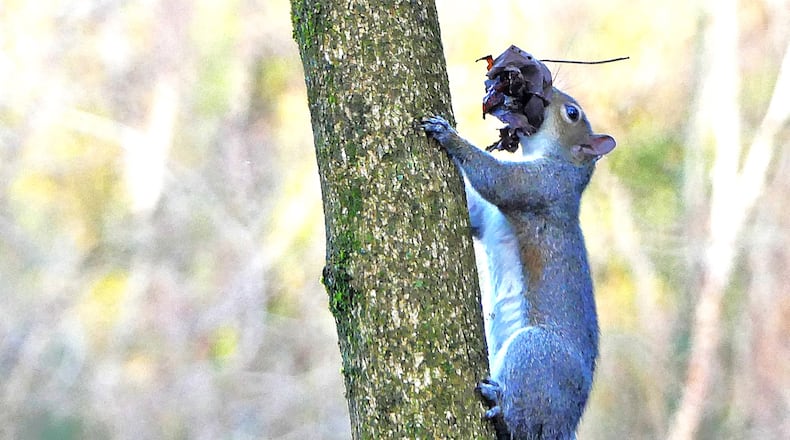You might consider giving a squirrel a hug on Friday (Jan. 21) since it will be National Squirrel Appreciation Day.
Actually, we’re joking about the hugging, but we’re serious about a day for celebrating the rodent. Christy Hargrove, a wildlife rehabilitation specialist in Asheville, North Carolina, created Squirrel Appreciation Day in 2001 to encourage people to learn more about the bushy-tailed creatures and be kind — at least for a day — to them.
I suspect, however, that some people might prefer a “Squirrel Eradication Day.” Many homeowners consider squirrels — especially the Eastern gray squirrel — as pests. Squirrels indeed make themselves unwelcome when they get into attics and damage wiring, or dig up bulbs in the garden, or ruin bird feeders while trying to rob the devices of food.
On the other hand, squirrels have endearing qualities. I love watching the frisky animals scampering at up to 20 mph over tree limbs and making amazing leaps — 10 times their body length — from tree to tree. This time of year, you’re likely to see squirrels engaging in a “mating chase” in which several males pursue a female among the treetops. January is one of two peaks in the squirrels’ annual breeding cycle in Georgia, the other being May and June.
To help you celebrate Squirrel Appreciation Day, here are some other gray squirrel facts:
• A single squirrel may bury 25-50 acorns per hour in autumn to retrieve and eat in winter. However, the animal often forgets where it cached many of the nuts, thus unwittingly planting new oak trees and changing the landscape.
• The bushy tail is a main form of communication. A twitching tail, for instance, may signal a nearby threat. The tail also may be used as an “umbrella” against rain and snow and as a stabilizer when a squirrel is scooting and leaping among branches.
• Squirrels build two types of nests. One is a tree cavity used for rearing young and for winter shelter. The other is made from dry leaves and twigs and lodged in a tree’s upper branches and used as temporary shelter for most of the year.
IN THE SKY: From David Dundee, Tellus Science Museum astronomer: The moon will be full on Monday — the Wolf Moon. Venus and Mars are low in the east just before sunrise. Jupiter and Saturn are low in the west just after dark.
Charles Seabrook can be reached at charles.seabrook@yahoo.com.
About the Author
Keep Reading
The Latest
Featured

